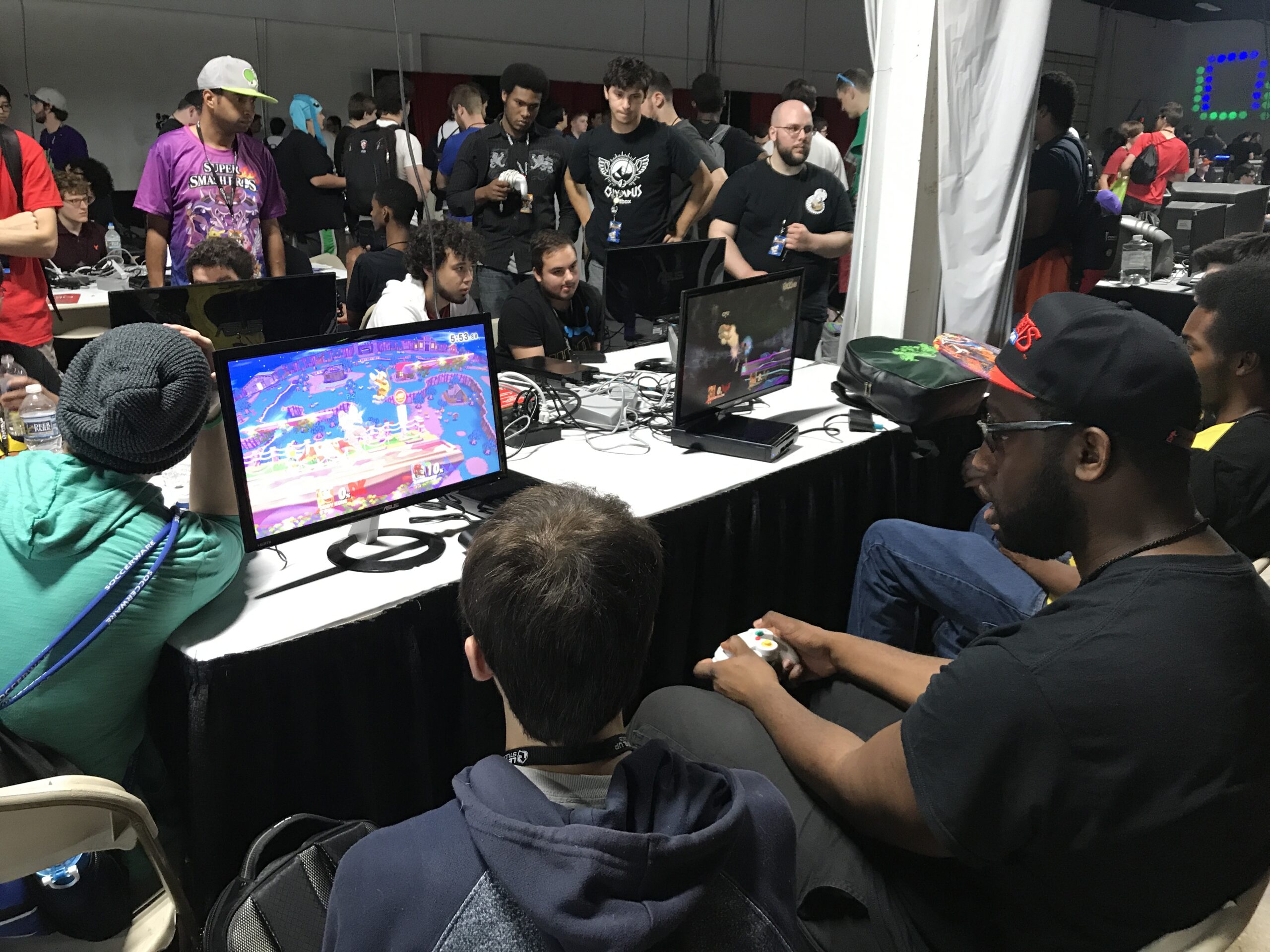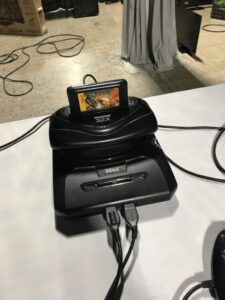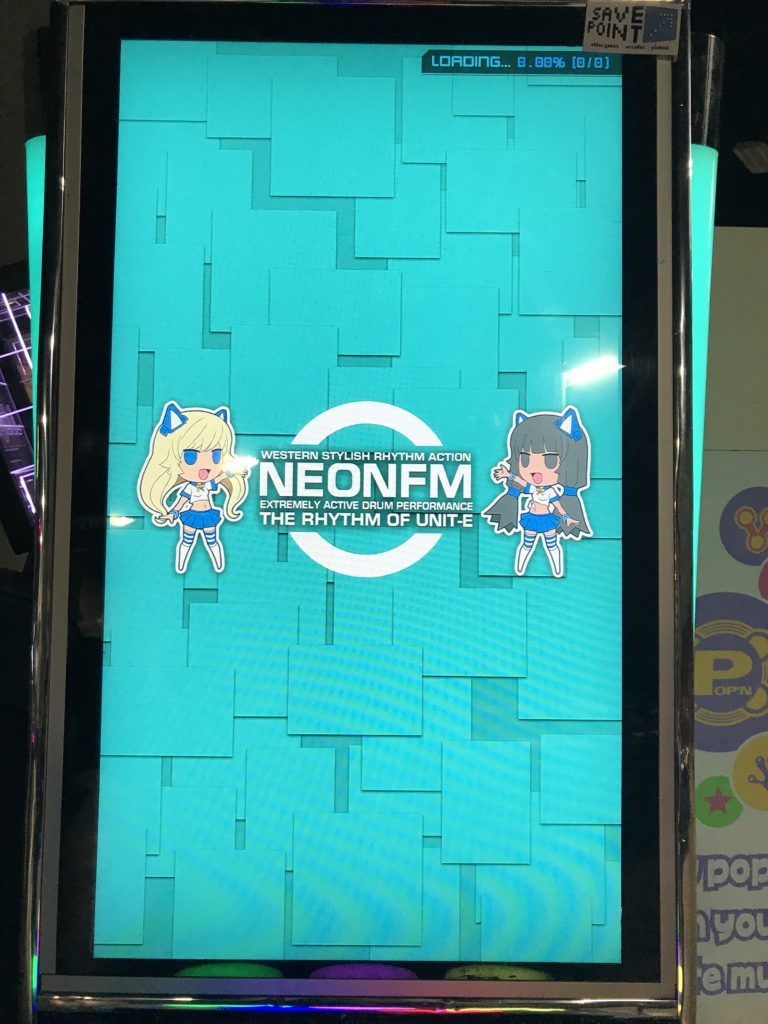
TooManyGames: What I Played
For a Sonic themed convention, there remained plenty for all gamers to enjoy at TooManyGames’s expansive free play arcade.
In one corner, booths upon booths were set up with classic brawlers, including Sonic the Fighters. In another, rows of tables showcased every console you could imagine, with playable titles of now and yesteryear across all genres. In the northwest wing, attendees showed crowds their best dance moves with with array of dance platform titles, including Dance Dance Revolution. Across the way, the best regional players of Super Smash Bros. competed for cash prizes across all versions of the game, including fan-produced Project M, as part of the annual Smashadelphia tournament.

As for me, my time covering five panels, concerts, and a burlesque show (more on that in a later story) as well as finding rare Sonic swag to snag meant my time in the arcade was limited. What I did play brought back great memories of my evolution as a gamer from past to present. Here are a small sample of impressions.
Doom (32X)
When I had the Genesis add-on as a kid, it was mostly used for Knuckles Chaotix, Virtua Fighter, and Virtua Racing. I had played both Doom and Wolfenstein 3D with my age still in single digits–and both, to my recollection, limited to just the demo. It is a pioneer of both the first person shooter and an expansive PC modding community; its source code serves as the foundation for derivative fan work Sonic Robo Blast 2.

Though not considered the best console port–indeed, all versions of Doom ported to consoles in the mid 1990s did not include all the original levels from the PC edition–the Sega developed and published experience held up in my gameplay. Though textures are muddy and cheap shots from enemies persist, it still felt great to revisit one of gaming’s signature moments.
Bust-a-Move 2: Arcade Edition (Saturn)
I was never a huge fan of the puzzle genre–titles like ChuChu Rocket! notwithstanding–but I always knew about Bust-A-Move, also known as Puzzle Bobble. Now over 20 years old, the addiction remains appealing, but that doesn’t mean I’m still any good at it.
I played the first three levels of the game’s story mode, and despite the simple, straightforward objectives–clear your patterns before you’re crushed by them–that’s about as far as I got. The charm of Taito’s Bubble Dragons as one of gaming’s cutest icons remains. Other players at TooManyGames, I’m sure, appreciated the addition.
Ridge Racer Type 4 (PlayStation)
Namco was slightly ahead of Sega’s curve by rolling out Ridge Racer to arcades and to consoles months before Daytona USA entered the field. It would ultimately be Daytona dominating a changed arcade landscape today, but the Ridge Racer franchise, now mostly relegated to consoles, made an indelible mark on the gaming wars of the 90s.
1999’s Ridge Racer Type 4, the last to be released on the original PlayStation, introduced a deep grand prix story mode, a vast array of cars to unlock, and solid arcade racing. The original PS controller never felt quite right in my hands, but simple controls made the four races I competed in easy to understand. With minimal pop-up, environments were almost distracting to the course road ahead. A snarky pit crew colleague gives R4 some flavor.
1080° Avalanche (GameCube)
As a fan of arcade racers, I’m always intrgued at how the concept is applied to other sports. 1080° Avalanche, the sequel to the classic 1080° Snowboarding on Nintendo 64, puts the emphasis on the race and not as much on snowboarding tricks. They help, but it makes for a refreshing experience to not have to constantly think about them.
In the match race and gate trial I played, environments felt fluid and, most important, fast. The latter is not easy to master, with gates strategically placed to balance speed and strategy. When 1080° Avalanche was released in 2003, it wasn’t quite held in the same regard as the original Snowboarding, but as a first-time player, it was exhilarating nonetheless.

Neon FM (Arcade)
Because I can’t dance worth a damn, Neon FM, a rhythm arcade game that uses hands rather than feet was right up my alley. It has a mobile equivalent, and more than 130 songs to try out your button mashing skills.
The gameplay is exactly what you’d expect from a rhythm game, but using my hands definitely made coordination easier. The one song I played–which I could barely hear amid the other madness of the open arcade–was finished with a respectable rank. Neon FM, the product of independent developer Unit-E, is easy to jam to. It will be interesting to see how much of a dent it can make into the DDR dominated market.
Crazy Taxi: High Roller (Arcade)
By far, the highlight of the arcade was playing what most gamers know as Crazy Taxi 3. Though not well received in its XBOX release 15 years ago, the arcade edition plays as well as any entry in the franchise.
In the Small Apple level, the use of the Crazy Hop allows for quick shortcuts through a nighttime metropolis. In my case, mistimed hops also meant nightmare scenarios, getting stuck in awkward corners and–through no fault of the game–forcing sometimes tedious corrections and retries that cost precious seconds off time and precious patience from my passengers. Though I was disappointed Daytona USA‘s only appearance at TooManyGames was the Saturn CCE version, seeing and playing a Sega arcade racer I thought was lost to time was an excellent consolation.



![Private: [ID: mzUWx3nTPo0] Youtube Automatic](https://lastminutecontinue.com/wp-content/uploads/2025/01/private-id-mzuwx3ntpo0-youtube-a-360x203.jpg)
![[ID: CaqNgFLNrLo] Youtube Automatic](https://lastminutecontinue.com/wp-content/uploads/2024/11/id-caqngflnrlo-youtube-automatic-360x203.jpg)
![Private: [ID: kJ7Y88VRf0A] Youtube Automatic](https://lastminutecontinue.com/wp-content/uploads/2022/10/private-id-kj7y88vrf0a-youtube-a-360x203.jpg)
![Private: [ID: y5E5K-__fN4] Youtube Automatic](https://lastminutecontinue.com/wp-content/uploads/2023/06/private-id-y5e5k-fn4-youtube-aut-360x203.jpg)